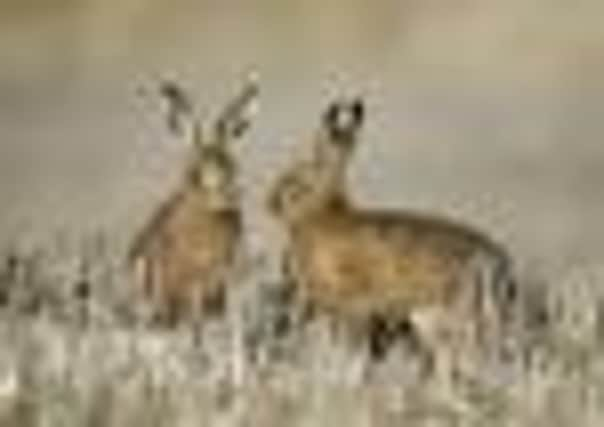The spring season of the mad hare


The air is heavy with the strong damp odour of the red-brown clay soil, and young new shoots are pushing through.
The Brown Hare is a wonderful wild and evocative creature, an animal of beauty and elegance, mystery and magic. Across Europe, India, Africa, Japan and China, the hare is the subject of stories and mythology.
Advertisement
Hide AdAdvertisement
Hide AdAround the globe, the hare is linked to the full moon, and the so-called mad behaviour of the hare, was associated with lunacy (ie, a madness induced by the Moon).
Maybe it was simply that the activities of the hare, especially the mad springtime boxing, were more visible and obvious by moonlight.
Like the hare, the Moon’s appearance and behaviour are changeable and erratic.
The Moon and the hare together join the mundane, ordinary, everyday world to that of the spirits, bringing together life and death, birth, growth and renewal.
Advertisement
Hide AdAdvertisement
Hide AdThrough deeply held spiritual associations, the hare finds a place in religion. It is suggested that this is as far back as the Celts who are believed to have introduced the animal to Britain.
Migrating north and westwards from central Europe and the Mediterranean, it failed to arrive before melting ice waters filled the English Channel.
Therefore, in spite of long cultural associations, the Brown Hare is technically not native to Britain.
It is likely that the Celts brought this animal with them, less as a prized creature of the hunt and a valuable source of food, than as an iconic animal to be worshipped.
Advertisement
Hide AdAdvertisement
Hide AdThese ancient British peoples only caught and ate hares during the springtime festival of Beltane; at other times, it was protected and worshipped.
Whether the Celtic introductions fully established and survived here is debateable, but certainly, the Romans and then the Normans reintroduced numbers of Brown Hares to boost any surviving population.
Since then, the hares have followed the fortunes of the landscape, and were very abundant in medieval open fields, heaths and downland, and even after the parliamentary enclosures of the 1700s and 1800s.
Numbers plummeted in the late 1900s with the massive transformation of agricultural landscapes in the post-Second World War period, but have now begun to recover.
* Ian Rotherham is a writer, broadcaster and Professor of Environmental Geography, Reader in Tourism and Environmental Change.